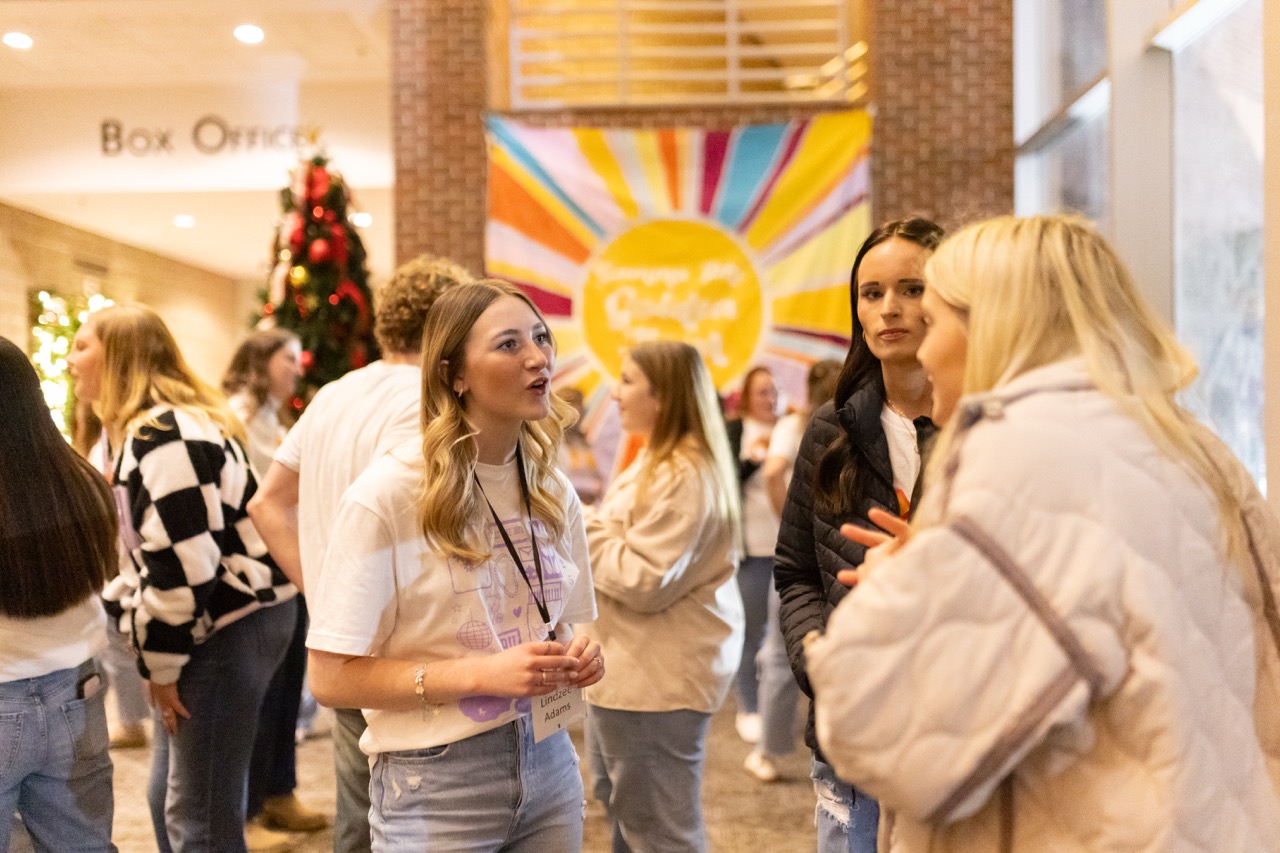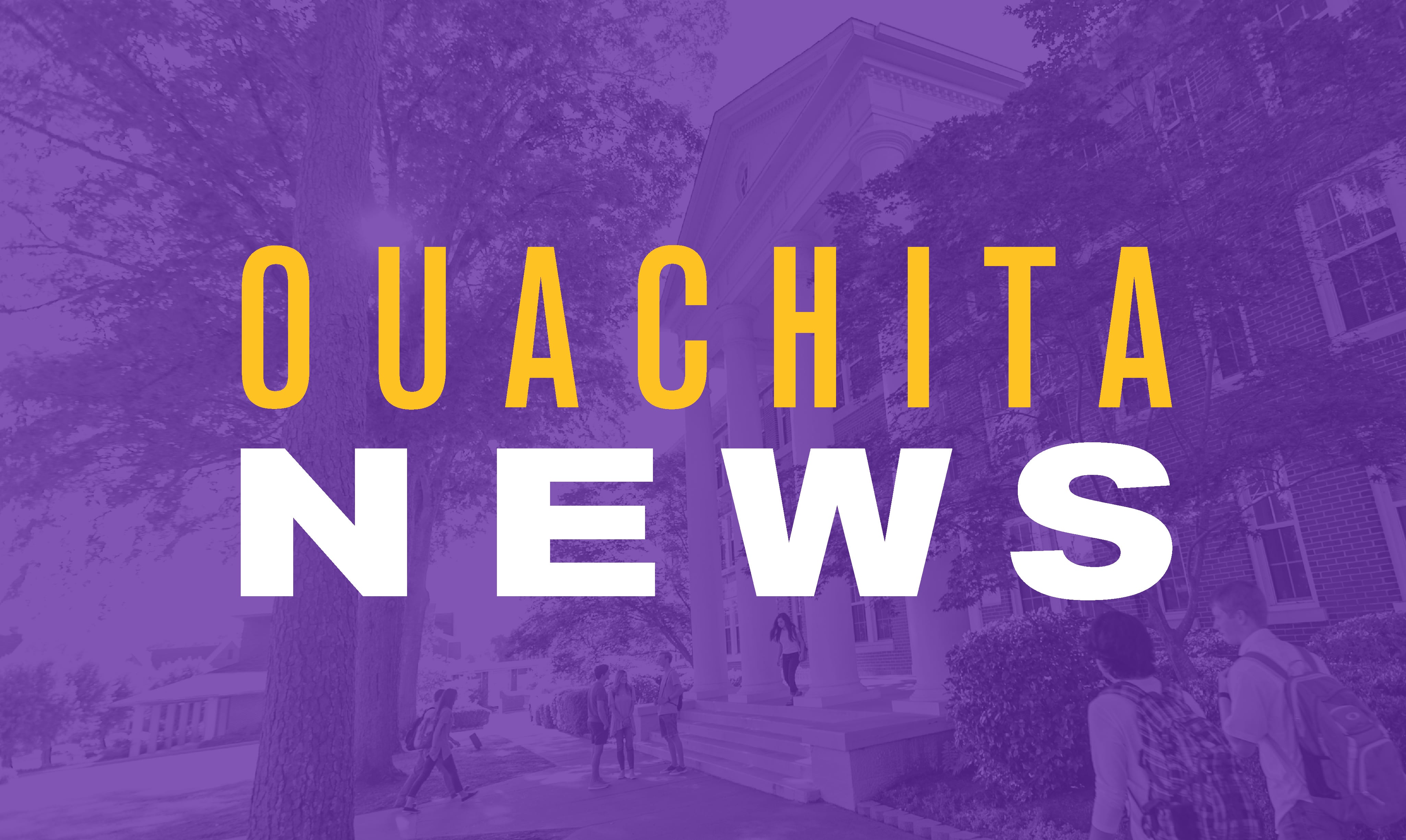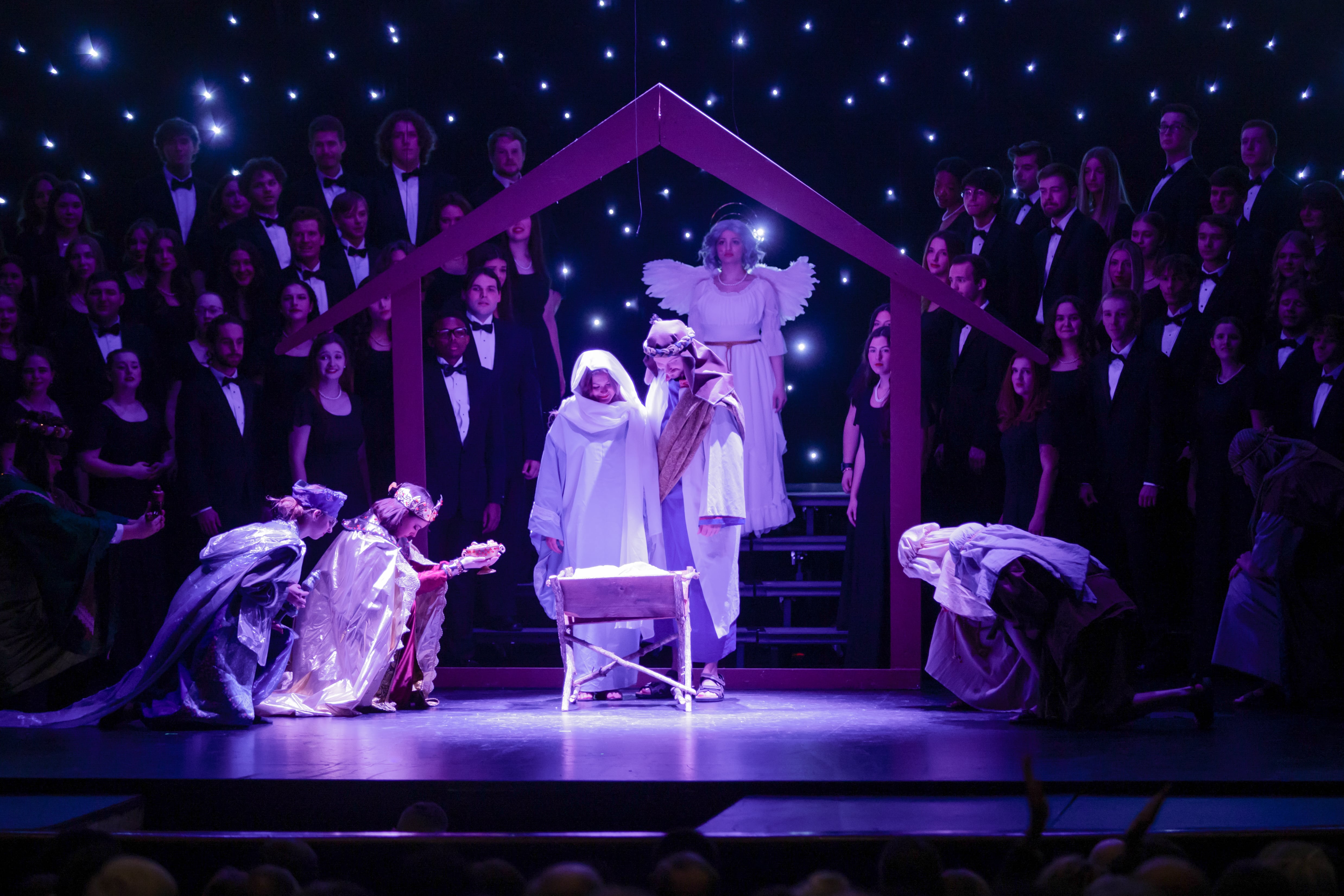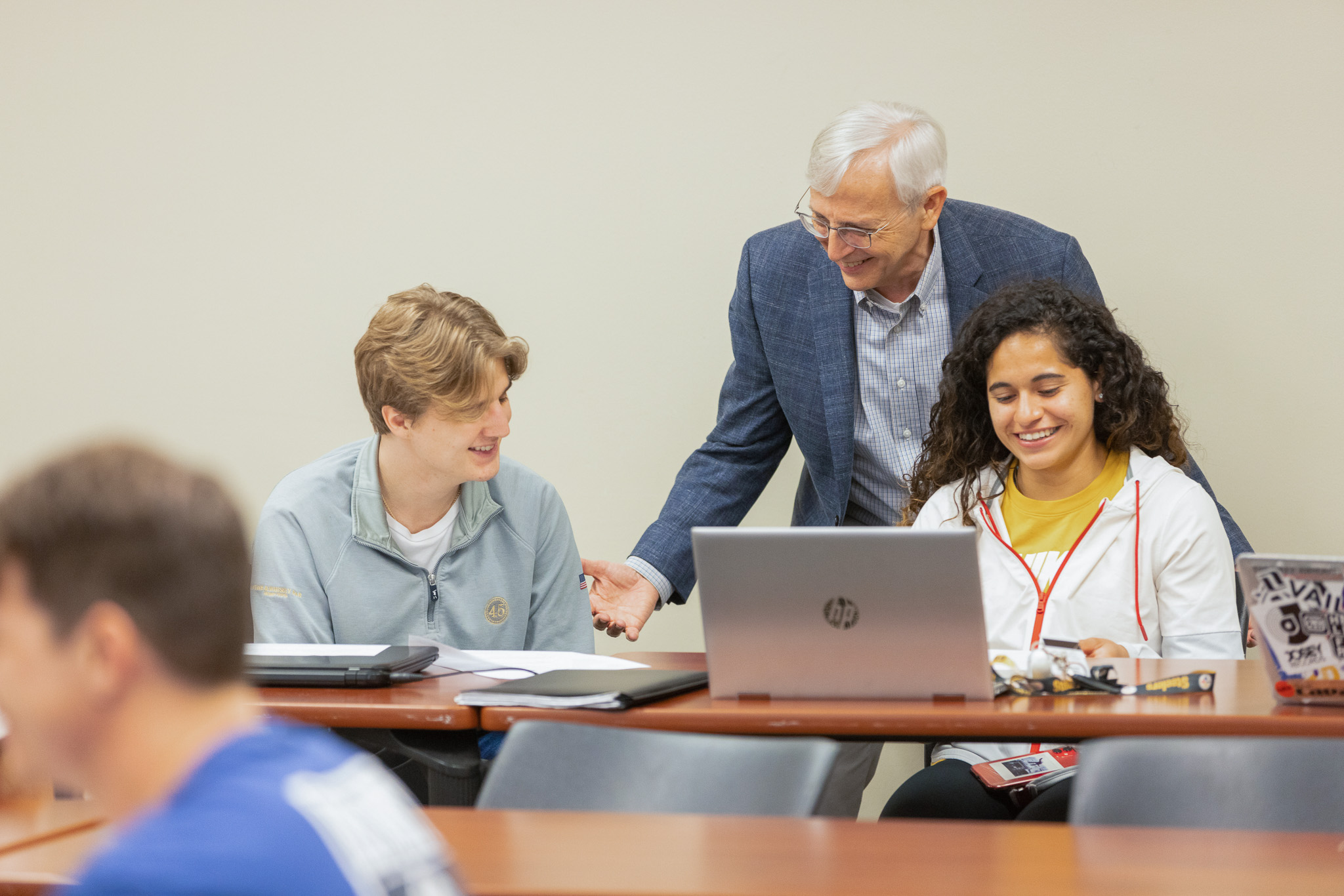Ouachita bioinformatics class hosts high school students in Genome Hack-A-Thon
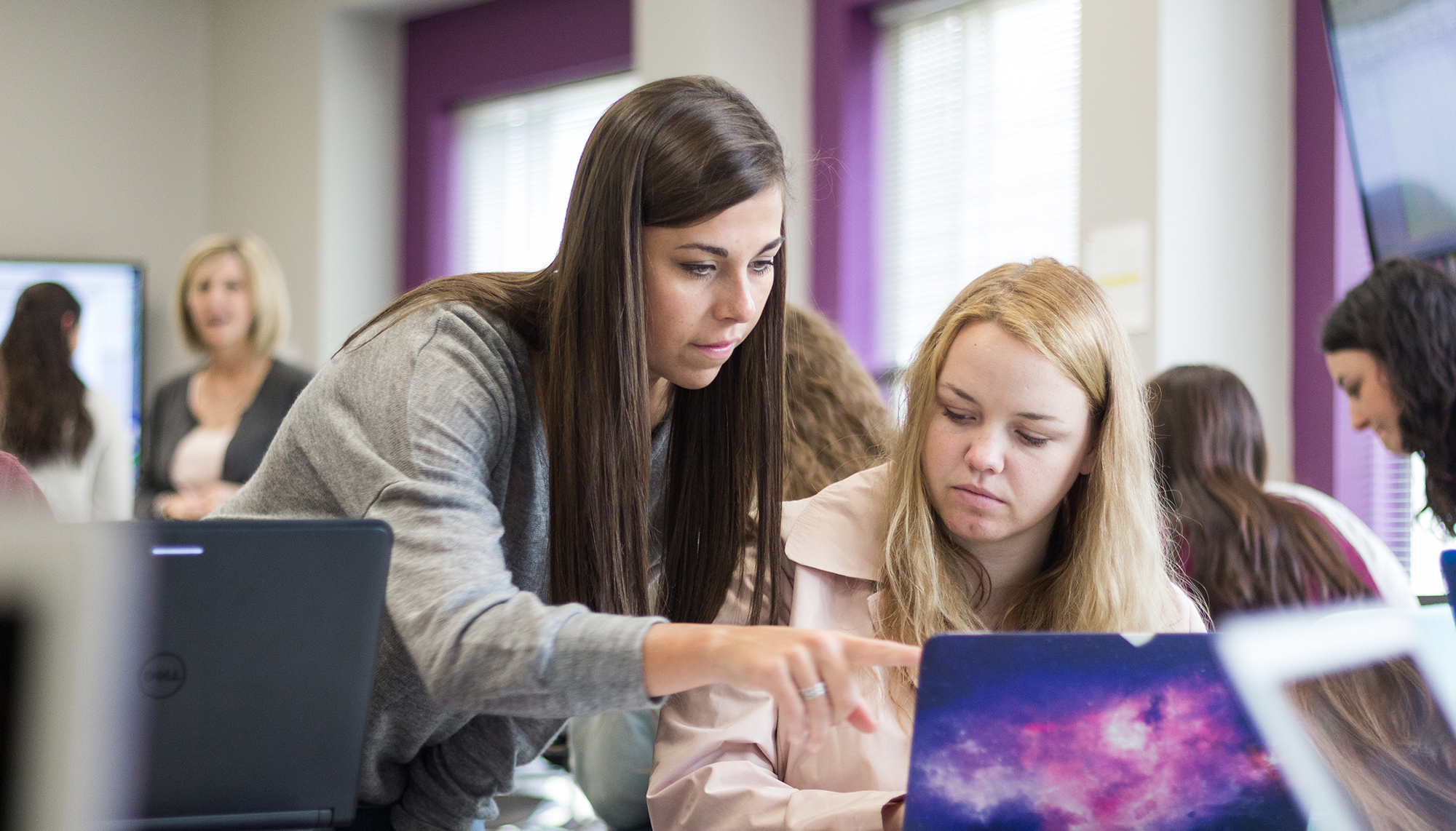 April 23, 2018
- Sarah Davis and Katie Smith
April 23, 2018
- Sarah Davis and Katie SmithThe bioinformatics class at Ouachita Baptist University has spent the semester learning
how to examine and decode different viral genomes. The class recently invited junior
and senior high school students from six schools from around the state to campus to
teach them to do the same during a Genome Hack-A-Thon.
Kayla Haberman, a junior biology and psychology double major from Lorena, Texas, attended
Howard Hughes Medical Institute over the summer of 2017 to present research she had
completed on viral genomes at Ouachita. During the conference, a group from another
university presented on decoding a genome within a day. This gave Haberman the inspiration
to do the same but to also include high school students in the process.
“I thought, ‘What if we can get high school students to come and not only introduce
them to bioinformatics but also engage them in the active role science is now?’” Haberman
said. “It’s hands-on, and you actually do use computer software in the world today
to analyze genes.”
During the Hack-A-Thon, the students utilized DNA Master, a software program to analyze
where the gene sequences in a phage started and stopped. The visiting students and
their teachers worked together in small groups, and Ouachita students led each group.
Periodically, each group would stop and share an update about their decoding.
“The genome will be reviewed by my bioinformatics classes,” explained Dr. Nathan Reyna,
associate professor of biology. “Eventually, it will be submitted to the National
Genome Database and will be used by others. They are not working on a model or with
mock data. They are working on real research and will contribute to the scientific
community. I think that’s what makes this mode of teaching exciting. Students are
still learning basic science, but they are now learning in the context of a much larger
project.”
The National Genome Database contains genomes collected from all over the United States,
Puerto Rico and areas of the Caribbean. Universities from these regions collect local
soil samples and analyze the phages in them. Through the database, they can upload
their research and access other universities’ findings.
Students spent the day hacking phage DelRio, a phage discovered near the Caddo River
by Haley Davis, a freshman biomedical major from Cabot, Ark., and Emme Edmonson, a
sophomore biology and chemistry major from Benton, Ark., as part of the class.
“We were able to effectively teach the attendees all about the annotation process within
a few short hours,” said Morgan Masengale, a sophomore communications sciences and
disorders major from West Memphis, Ark. “By the end of the day, the students and teachers
were correctly annotating genes all on their own! Through the Hack-A-Thon, I learned
a lot about how to teach other students in a way that they can understand the material.”
Along with providing Ouachita students the opportunity to teach, the Hack-A-Thon gave
the high school students the opportunity to experience what studying biology is like
in a university setting.
“I think just being exposed to bioinformatics will help me a lot next year,” said
Kayla Ventress, a senior at Bismarck High School. “I think this will definitely help
because I’ll be exposed to more of what you see in college. You don’t see much of
this in high school.”
The high school teachers who participated were able to take their students into a
hands-on learning experience and provide them with tools not typically available in
a high school classroom.
“I think this gives my students insight into another science that we’re not able to
offer at the school,” explained Alma Barnes, a chemistry and physics teacher at Murfreesboro
High School. “I think it gives them an idea of something else to look at as far as
a college path. They all have an idea of what they want to do, but if they could look
at something else, they might enjoy doing something like this.”
The Genome Hack-A-Thon is part of Ouachita’s course-embedded undergraduate research
experiences (CURE) program and is funded by the National Science Foundation and the
Established Program to Stimulate Competitive Research (EPSCoR). EPSCoR works with
Ouachita and nine other Arkansas universities with the mission of bringing higher-level
learning concepts and research into K-12 schools. Ouachita’s Genome Hack-A-Thon is
the first project to directly include high school students in the university’s research
initiatives. EPSCoR plans to provide other similar projects around the state.
Dr. Reyna “is a really great mentor to his students,” said Jennifer Shelton, EPSCoR
director of education, outreach, diversity and communications. “Because Ouachita is
a smaller campus, he has a better connection with his students and has been able to
spend more time with student development. He’s able to take more initiative, and he’s
got grants through the Howard Hughes program that really helped kicked this off.”
For more information, contact Dr. Reyna at [email protected] or (870) 245-5240.
By Sarah Davis and Katie Smith // Photo by Caden Flint
April 23, 2018
You Also Might Like
Recent
